All about the bugs "soldiers"
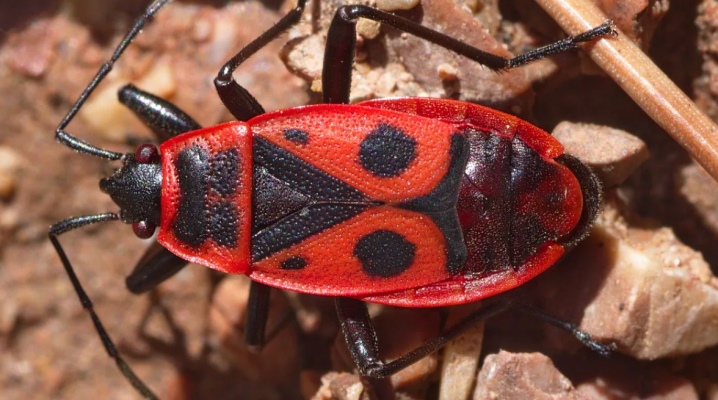
The common soldier bug or Pyrrhocoris apterus is distinguished by its bright black and red color. People often call him "firefighter" precisely for such a remarkable color. This species is quite widespread in the territory of the Russian Federation. Due to its accelerated reproduction, an increased population growth has been observed in recent years. The bug lays its larvae in the bark of a tree, which is why it poses a danger to some plants.
However, this species is considered relatively harmless, especially when compared to other species, which have hundreds of species classes in the family.
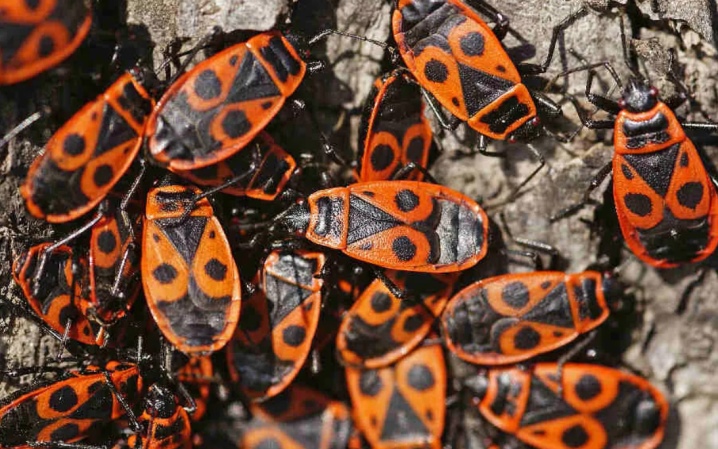
What is it and what does it look like?
The soldier has a rather uncommon appearance. His description is quite unusual.
- Brown or black predominates in the pattern or color of the limbs.
- Red tints are present on the beetle's shell and eyes. Such expressive features have become his hallmark.
- Most often, this species lacks wings, which is why it is called a wingless bug.
- In size, it reaches up to 1 centimeter.
- Tree bark and sawdust are the most comfortable living conditions for him.
For a person, he does not pose any danger. It does not bite or drink blood, but it can cause serious damage to trees. Therefore, it is necessary to monitor the population extremely closely and prevent its uncontrolled reproduction.
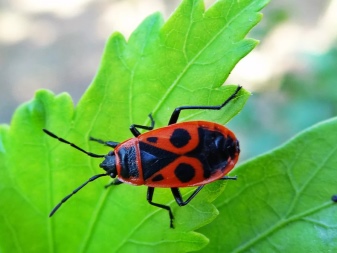
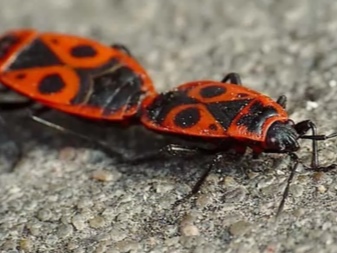
Who is often confused with?
Despite such striking external characteristics, it is often confused with other pests. Often, his distant relatives are mistaken for representatives of the same species. Although the differences are most often overlooked by those inexperienced in this matter. Similar traits can be discouraging and confusing.
So, the soldier is often mistaken for an earthen bug. This is not surprising, because the red color and black color of the limbs are very similar to them. However, insects differ in shape and size. The earthen bug is dominated by sharp forms, which give it greater formidability and some kind of danger, although it is practically harmless to humans. And the soldier's lines are all softer, rounded and smoother. No less important is the fact that the soldiers live in large colonies for the safety and preservation of their offspring, while the earthen bug prefers loneliness.
Another insect with which this bug is confused is the firefighter beetle. Outwardly, these creatures are not alike in any way, but here the name played a major role. Many people do not understand that "beetle" and "bug" are completely different concepts. This is how the "red-bug" acquired the status of a beetle, although it is not. The reason for this was the characteristic red color, the name stuck among the people, and now they are considered representatives of the same group.


Lifestyle
After a long hibernation, they appear on the surface at the moment when good and warm weather is firmly established. Most often, this period falls on the end of March or the beginning of April. If the spring is surprisingly cold, then this process can be postponed to mid-April.
The colony usually lives in old stumps or trees, garden plots are just their favorite places. Such corners are best protected from predators or other insects that could harm them. They lead predominantly a daytime lifestyle, since in the light it is much easier to look for food for themselves, reproduce or flee from threats.
After awakening, insects strive to restore all their previously expended strength and quickly begin the reproduction stage. DFor this, they actively begin to absorb germinating plants. At this moment, they become the most dangerous.
Garden plants can be significantly affected, especially if they are in the seedling stage. When the seedlings are weakened as much as possible, then they can become easy prey.

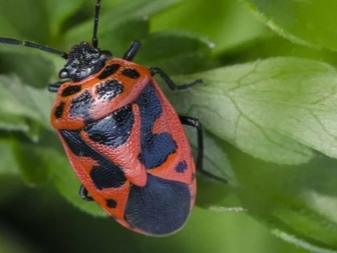
What do they eat?
They feed mostly on young seedlings, although their diet is very varied. These bugs, without exaggeration, can be called omnivores. They prefer pollen, seedlings and fruits, as well as carrion or small insects. Therefore, they are not so harmless, at least for other smaller species.
Gardeners should be especially wary of them in the spring, since during this period they begin an active search for food. They do not care about the type of plant, they will gladly taste what they find on the way. This can be both recently planted seedlings and freshly blossomed flowers. Gardeners will have to keep an eye on their wards, because these pests can taste them.
This species is characterized by cannibalism. If the temperature is unstable in winter, then the colony is able to wake up from sleep ahead of time.
Due to the fact that bedbugs do not have enough plant food, they can begin to eat their younger counterparts, which turned out to be weaker.
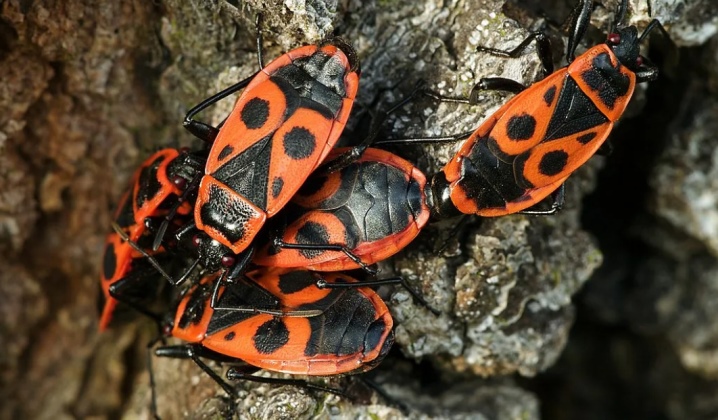
How do they reproduce?
Reproduction begins after waking up. At the end of this process, around May, females can lay up to 40 eggs. Not all of them will survive, but the strongest will move to the larval stage. This type of insect skips the pupal stage, due to which maturation occurs faster.
Before that, the eggs will have time to change their color. From the very beginning, they will have a pale white tint, perhaps it will be slightly yellow. As the embryo develops, they will darken until they burst. The insect can lay eggs in absolutely any place you like, so they can ripen on the foliage of the bark and even on the ground. The bugs do not worry about the state of the offspring, since the females lay a fairly large number of eggs. In other words, the population is not threatened, and parents do not have to worry about the state of the clutch.
The ripening process can take up to two weeks. This is influenced by environmental factors. So, due to colder and unstable weather, the formation can be delayed by more than one and a half times.
Mating in redbirds is very unusual. It's mono to say that in some way they differ from other insects in this. The partners interlock with each other, and fertilization begins. It can take a whole week, although on average it takes a couple of days. All this time, they remain together, while not losing the ability to move. Since they need nutrition and protection, they have to function as a single organism. They are no longer able to replace the satellite until the entire action is completed.
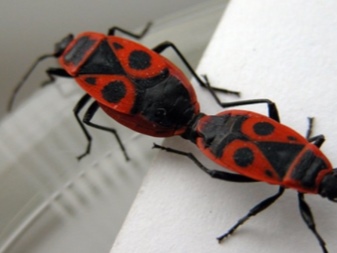
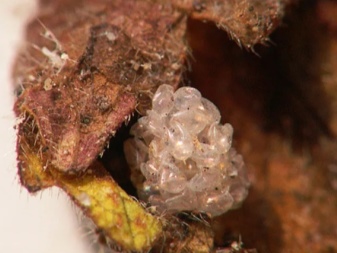
Where do they live?
The colony chooses its habitat for safety reasons. It should preferably be a dark, cool, secluded place where excess light does not penetrate. Also, it should be away from people or animals that could unceremoniously intrude into this space. But at the same time, there should be power sources within walking distance, because these bugs do not have wings and are not able to move long distances.
So, often their choice falls on rotten stumps, tree bark, gaps between stones, less often in the basements of houses. These are the places in which nothing threatens them, and they can calmly lead their measured and quiet life there without unnecessary stress.
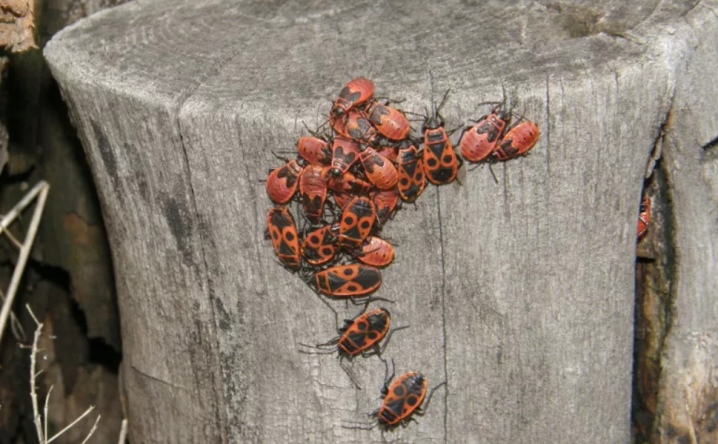
What are harmful and useful?
The neighborhood with such insects is not only negative. It has two sides of the coin, like everything in our life. You cannot get rid of them completely, no matter how hard you try, they will still return to your garden. However, they also have their own benefits, which may not be so obvious at first glance.
For example, these bugs devour vegetation that could be detrimental to your plantings. Or they absorb other, no less nasty parasites, which would be more difficult and problematic to exterminate.
However, the harm from them is much greater. Some gardeners naively consider them harmless, but this is fundamentally wrong. So, their population significantly affects the yield. For the garden, their foray can turn into a real cataclysm and tragedy. Harvests can be severely affected, and some trees risk never recovering from losses.
However, these bugs are not interested in people. Unlike their blood-sucking counterparts, which are harmful to humans, the soldiers prefer not to bite. They can only bring significant harm to the vegetable garden or garden.
Therefore, you should not be afraid to pick them up or carry them from place to place. Also, they do not know how to release any toxins, so you do not risk getting a burn or a chemical reaction from contact with them. Also, you can not be afraid of allergies or the appearance of spots on the surface of the skin.
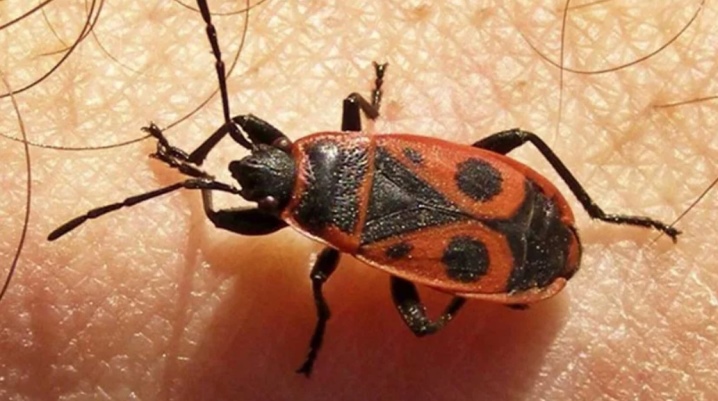
How to fight?
If the situation is out of control, and you can no longer endure such an annoying neighborhood, then you can try to get rid of bedbugs. An important role is played by the place in which these uninvited guests are wound up, since the drugs will have to be selected based on the situation.
If the bugs are bred in the apartment, then the best solution would be to poison them, for this it is better to call a sanitary and epidemiological station, since working with poison at home can be very dangerous. In a closed and poorly ventilated room, it can have a negative effect on health, so it is better to entrust it to professionals. After processing, open all windows to ventilate the room. It is advisable not to spend the night at home for a while to allow all the chemicals to evaporate.
Work on the site is much safer. Here, open air will prevent suffocation and poisoning. But do not forget about safety precautions. So, to handle cabbage, use gloves or a respirator if necessary.
Dilute the poison in accordance with the directions on the package. It will indicate the exact proportion that must be followed in order for the poison to be mixed correctly.
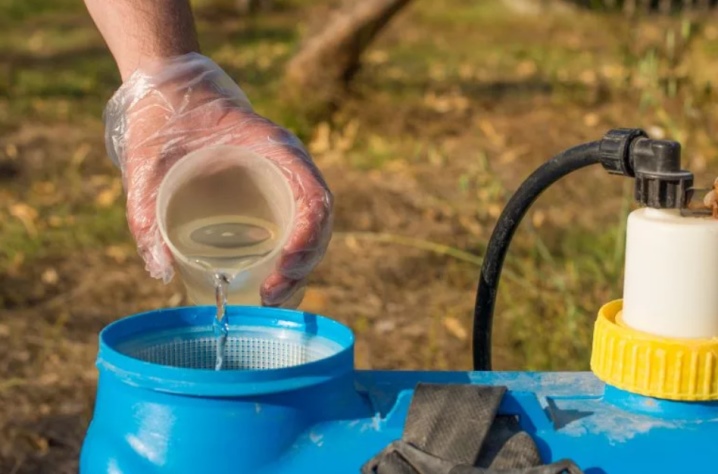
Chemicals
Today, there are a huge number of different chemicals that can completely rid you of annoying creatures. Some of the medications are used once, others on an ongoing basis. But despite the high efficiency of the use of these substances, it is necessary to take into account some aspects.
It is best to start processing before flowering, as bees that participate in pollination can become victims. Repeat the process mid-season and at the end for longer lasting results.

Light traps
One of the least hackneyed ways of catching. With its help, you cannot completely get rid of the entire colony, but you can significantly reduce the population. The light attracts the insect to itself. Most often, conventional lamps are used in the manufacture, but there are also models with ultraviolet radiation. The bug flies in and falls into the tenacious paws of a mosquito net or adhesive tape. This is the most environmentally friendly option that is suitable for a summer cottage or apartment.
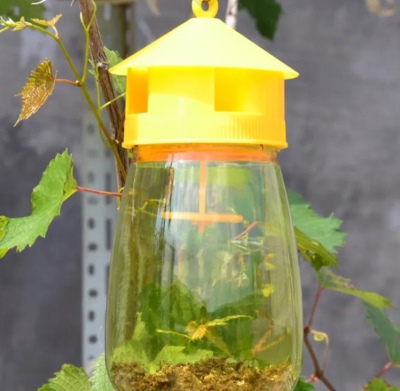
Traditional methods
Traditional methods are not able to completely destroy the parasites. They will create the most intolerable conditions that will survive the bug from its habitat. It is worth noting that this process will take a lot of time, and the procedures will have to be performed repeatedly in order for the result to become obvious.
There are dozens of different simple recipes on the web. However, a simple soap solution remains the most accessible. It will need about 10 liters of water and 500 milliliters of soap. This mixture must be regularly passed through the infected areas. Over time, you will notice that the parasites have left the beds.

Preventive measures
To prevent the risk of infection and spread of the epidemic, you must follow a few simple rules.
- Remove all possible stumps from the territory of the site, as they serve as the main refuge for the soldiers.
- Mow the weeds without leaving the bugs a chance to breed.
- Periodically perform preventive treatment of your plantings. So you will reduce the chances of infection several times.
- Plant scented herbs such as wormwood around the perimeter of the beds. The pungent smell will scare away all parasites.
By following these simple rules, you will protect your beds from unwanted guests who showed up to you without warning.















The comment was sent successfully.